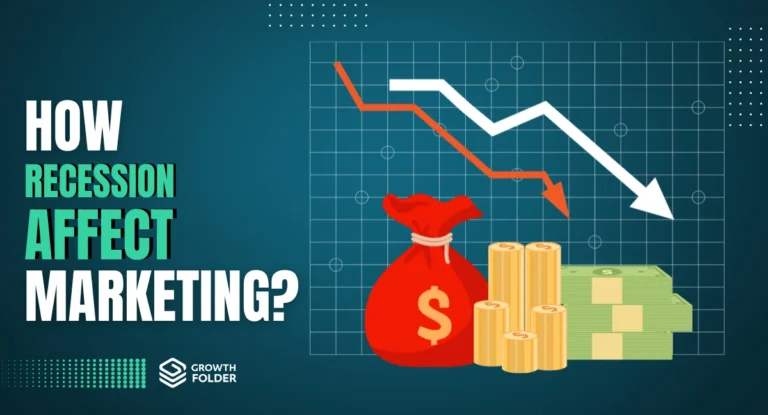
In the thrilling game of business, growth is the name of the game, and measuring it is the scoreboard that keeps you ahead.
Picture yourself as the coach, devising winning strategies and making data-driven decisions to conquer the market one quarter at a time.

Whether you’re a rookie entrepreneur or a seasoned business mogul, understanding the art of measuring business growth is like mastering the perfect slam dunk.
But worry not, for this guide is here to be your playbook – overflowing with creative tactics, witty insights, and metaphorical wisdom.
This comprehensive guide will answer how to measure business growth and explore various key performance indicators (KPIs) and best practices for measuring business growth.
So, lace up your sneakers, grab your clipboard, and get ready to embark on a captivating journey to unlock the secrets of measuring business growth like never before!
Setting Clear Business Goals and Objectives

Setting clear business goals and objectives is an essential step for any company that wants to measure its growth and progress effectively.
A well-defined set of goals and objectives provides a roadmap for a company to achieve success by outlining specific targets and defining clear strategies to achieve them.
It helps businesses to stay focused on their priorities, align their efforts, and measure their progress effectively.
Importance of setting SMART goals
Setting Specific, Measurable, Achievable, Relevant, and Time-bound (SMART) goals is essential for measuring business growth.
These goals provide a clear direction for your organization and ensure that your growth measurement efforts are aligned with your overall business strategy.
For example, a small online retail store may set a SMART goal to increase its monthly revenue by 10% over the next six months by launching a new product line and implementing a targeted marketing campaign.
Aligning goals with overall business strategy
Your business growth goals should be aligned with your organization’s overall strategy.
This ensures that your efforts are focused on areas that will contribute to long-term success.
For instance, if your organization’s strategy is focused on expanding into new markets, you may set growth goals related to market penetration or increasing your market share in those regions.
Regularly revisiting and adjusting goals
As your business evolves and the market landscape changes, it’s essential to revisit and adjust your growth goals.
Regularly reviewing these objectives ensures that they remain relevant and help you stay on track toward achieving your overarching business objectives.
1. Financial Metrics

Financial metrics are one of the most important ways to measure business growth.
These metrics provide valuable insight into a company’s financial health, profitability, and overall performance.
By tracking financial metrics over time, businesses can identify areas for improvement and make informed decisions about their future investments and strategies.
Revenue Growth
Revenue growth is an essential financial metric that reflects the change in a company’s sales or income over a specific period of time, usually calculated on a monthly, quarterly, or yearly basis.
It helps you understand how well your business is performing in generating income through its products, services, or other revenue streams.
Calculating revenue growth is relatively simple.
First, determine the difference between your current revenue and the revenue from the previous period. Then, divide this difference by the revenue from the previous period and multiply by 100 to express the result as a percentage.
For example, if your business generated $100,000 in revenue last year and $120,000 this year, the revenue growth would be:
Revenue Growth = (($120,000 – $100,000) / $100,000) * 100 = 20%
A positive revenue growth percentage indicates that your business is experiencing an increase in sales, which could be attributed to factors such as successful marketing campaigns, product improvements, or market expansion.
On the other hand, a negative growth percentage may signify a decline in sales, potentially due to increased competition, economic downturns, or other challenges.
Year-over-year (YoY) growth:
YoY growth compares your revenue from one year to the same period in the previous year.
This metric helps you understand long-term growth trends and provides insights into the effectiveness of your business strategies.
For example, if your business earned $1 million in revenue in 2022 and $1.2 million in 2023, your YoY revenue growth would be 20%.
Quarter-over-quarter (QoQ) growth:
QoQ growth measures revenue changes between consecutive quarters.
This metric allows you to identify short-term trends and respond to potential issues more quickly than YoY growth.
For instance, if your business earned $250,000 in revenue during Q1 and $300,000 in Q2, your QoQ revenue growth would be 20%.
Gross Profit Margin
The gross profit margin is calculated by dividing gross profit by total revenue.
This metric helps you understand how efficiently your business is generating profit from its sales.
A higher gross profit margin indicates that your business is producing goods or services at a lower cost, giving you more resources to invest in growth.
Net Profit Margin
Net profit margin measures the percentage of revenue that remains as profit after accounting for all expenses.
It is calculated by dividing net profit by total revenue.
A higher net profit margin means that your business is retaining more profit from its sales, indicating that it is operating more efficiently and providing more resources for growth.
Cash Flow and Working Capital
A healthy cash flow and sufficient working capital are crucial for business growth.
Cash flow measures the amount of money flowing in and out of your business while working capital is the difference between your current assets and current liabilities.
Monitoring these financial metrics ensures that your business has enough resources to meet its short-term obligations and invest in growth opportunities.
Return on Investment (ROI)
ROI measures the efficiency of an investment by comparing the profits generated to the initial cost.
It helps you determine which investments are driving growth and which may need to be reconsidered.
For example, if you invest $10,000 in a marketing campaign and generate $50,000 in additional revenue, your ROI would be 400%.
By analyzing ROI, you can optimize your investments to maximize growth and allocate resources more effectively.
2. Operational Metrics

Operational metrics are key performance indicators (KPIs) that help businesses monitor and assess the efficiency and effectiveness of their daily operations.
These metrics provide insights into various aspects of a company’s performance, including productivity, customer service, sales, and supply chain management.
Customer Acquisition Cost (CAC)
CAC is the average cost of acquiring a new customer.
It is calculated by dividing the total cost of sales and marketing efforts by the number of new customers acquired during a specific period.
A lower CAC indicates that your business is acquiring customers more efficiently, leaving more resources for growth and expansion.
For example, if your business spent $5,000 on marketing and sales efforts and acquired 50 new customers, your CAC would be $100 per customer.
Customer Lifetime Value (CLV)
CLV is the total revenue a customer is expected to generate for your business over the entire duration of their relationship.
A higher CLV means that customers are more valuable to your business, enabling you to invest more in acquiring new customers and retaining existing ones.
To calculate CLV, multiply the average customer revenue by the average customer lifespan and subtract the CAC.
Churn Rate
The churn rate is the percentage of customers who leave your business during a specific period.
A high churn rate may indicate dissatisfaction with your products or services and can negatively impact your business growth.
To calculate the churn rate, divide the number of customers lost during a specific period by the total number of customers at the beginning of the period.
Sales Conversion Rates
Sales conversion rates measure the percentage of leads or prospects that convert into paying customers.
Higher conversion rates indicate that your sales and marketing efforts are effective at turning potential customers into actual buyers.
Tracking conversion rates across different marketing channels and sales strategies can help you optimize your efforts for maximum growth.
Inventory Turnover
Inventory turnover is a metric that measures how quickly your business sells and replaces inventory.
A higher inventory turnover rate indicates that your business is effectively managing its inventory levels, reducing the risk of stockouts or excess inventory.
To calculate inventory turnover, divide the cost of goods sold (COGS) by the average inventory value.
Productivity Metrics
Monitoring employee productivity can provide insights into the efficiency of your workforce and help identify areas for improvement.
Examples of productivity metrics include revenue per employee, output per hour, or the number of tasks completed per day.
3. Market and Competitive Analysis

The Market and competitive analysis involves the systematic examination of the business environment, competitors, and market trends to better understand a company’s position and identify potential opportunities and threats.
This process enables businesses to make well-informed decisions, develop effective strategies, and adapt to the ever-evolving market dynamics.
It’s a crucial component of a company’s overall strategic planning and growth management.
Market Share
Market share is the percentage of total sales in a specific market that is generated by your business.
Increasing market share is a key indicator of business growth and can help you assess the effectiveness of your strategies in capturing a larger share of your target market.
Market Penetration
Market penetration measures the percentage of potential customers in a specific market that your business has reached.
A higher market penetration rate indicates that your business is successfully targeting and engaging its audience, contributing to growth.
Competitor Benchmarking
Competitor benchmarking involves comparing your business’s performance metrics to those of your competitors.
Benchmarking helps you identify strengths, weaknesses, and opportunities for growth by understanding how your business stacks up against the competition.
Industry Growth Rates
Monitoring industry growth rates can provide context for your business growth metrics.
Comparing your growth rates to industry averages can help you identify areas where your business is outperforming or underperforming and inform your growth strategies.
4. Customer Metrics

Customer metrics are a set of key performance indicators (KPIs) that help businesses monitor and evaluate their performance in terms of customer acquisition, satisfaction, and retention.
By tracking and analyzing these metrics, companies can identify areas for improvement, tailor their marketing and sales strategies, and enhance the overall customer experience, ultimately leading to better business growth.
Customer Satisfaction (CSAT)
CSAT is a metric that measures customer satisfaction with your products or services.
Higher customer satisfaction can lead to increased customer loyalty, positive word-of-mouth marketing, and ultimately, business growth.
CSAT can be measured through surveys, feedback forms, or reviews.
Net Promoter Score (NPS)
NPS is a customer loyalty metric that measures the likelihood of customers recommending your business to others.
A higher NPS indicates that your customers are more likely to refer others to your business, contributing to growth.
NPS is calculated by subtracting the percentage of detractors (customers who rate their likelihood to recommend your business as 0-6) from the percentage of promoters (customers who rate their likelihood to recommend your business as 9-10).
Customer Retention Rate
Customer retention rate is the percentage of customers who continue to do business with your organization over a specific period.
A higher retention rate indicates that your business is successful at maintaining customer relationships, leading to increased repeat business and growth.
To calculate the customer retention rate, divide the number of customers retained at the end of a period by the number of customers at the beginning of the period.
Customer Engagement Metrics
Customer engagement metrics measure how customers interact with your brand, products, or services.
Higher customer engagement can lead to increased customer loyalty and growth.
Examples of customer engagement metrics include website visits, social media interactions, email open rates, and product usage.
5. Employee Metrics

Employee metrics help businesses monitor and evaluate the performance, satisfaction, and engagement of their workforce.
By tracking and analyzing these metrics, companies can identify areas for improvement, optimize their talent management strategies, and create a better work environment, ultimately contributing to higher productivity and business growth.
Employee Turnover Rate
Employee turnover rate is the percentage of employees who leave your organization during a specific period.
A high employee turnover rate can negatively impact business growth, as it leads to increased recruitment and training costs and can disrupt operations.
To calculate the employee turnover rate, divide the number of employees who left during a period by the average number of employees during that period.
Employee Satisfaction and Engagement
Employee satisfaction and engagement are essential for business growth, as satisfied and engaged employees are more likely to be productive, innovative, and committed to the success of the organization.
Measuring employee satisfaction and engagement can be done through surveys, feedback sessions, and performance evaluations.
Employee Productivity
Employee productivity measures the output generated by each employee.
Monitoring employee productivity can help you identify areas for improvement and ensure that your workforce is operating efficiently, contributing to business growth.
Examples of employee productivity metrics include revenue per employee or output per hour.
Training and Development Metrics
Investing in employee training and development can improve your workforce’s skills, drive innovation, and ultimately contribute to business growth.
Metrics related to training and development include training hours per employee, training completion rates, and the return on investment (ROI) of training programs.
How to Leverage Technology for Data-Driven Growth Analysis?

Business Intelligence Tools
Business intelligence (BI) tools can help you collect, analyze, and visualize data related to your growth metrics.
By leveraging BI tools, you can gain insights, spot trends, and make data-driven decisions to drive growth.
Examples of BI tools include Tableau, Microsoft Power BI, and Google Data Studio.
CRM Software
Customer Relationship Management (CRM) software helps you manage your customer data and interactions, enabling you to track and analyze customer-related growth metrics more efficiently.
Examples of CRM software include Salesforce, HubSpot, and Zoho CRM.
Data Analytics and Visualization Tools
Data analytics and visualization tools help you analyze large volumes of data and present it in a visually appealing and easy-to-understand format.
These tools can help you uncover insights, identify trends, and communicate your growth metrics to stakeholders.
Examples of data analytics and visualization tools include Looker, Domo, and Sisense.
Integration of Tools for Holistic Analysis
Integrating your various data analysis tools can provide a more holistic view of your business growth.
By combining data from different sources and analyzing it together, you can gain a deeper understanding of the factors driving your growth and make more informed decisions.
Importance of Regular Review & Adaptation of Growth Metrics

Importance of periodic reviews
Regularly reviewing your growth metrics is essential for staying on track and adapting to changes in your business or market.
By periodically evaluating your metrics, you can identify trends, spot potential issues, and adjust your strategies as needed.
Adjusting metrics to business conditions
As your business evolves, your growth metrics may need to be updated to accurately reflect your current objectives and strategies.
Adjusting your metrics ensures that they remain relevant and help you stay focused on achieving your overarching business goals.
For example, if your business pivots to focus on a new market segment, you may need to update your market share and market penetration metrics to reflect this change.
Data-driven decisions for sustained growth
By regularly reviewing and adapting your growth metrics, you can make data-driven decisions that support sustained growth.
Using the insights gained from your metrics, you can optimize your strategies, allocate resources more effectively, and ensure that your business remains competitive in the market.
Conclusion
And there you have it – the ultimate treasure map to navigate the exciting, unpredictable, and often tumultuous seas of business growth.
In conclusion, learning how to measure business growth is the cornerstone of your ongoing success and an effective way to stay ahead of the competition.
By understanding and implementing the key performance indicators and best practices outlined in this guide, you can ensure that your organization is on the path to growth.
Remember, the key to sustainable growth is continuous learning, adaptation, and innovation.
So, as you take the next steps in your business journey, keep it simple, stay focused, and always be ready to embrace new opportunities.
After all, success is best enjoyed when it’s easy to understand, and the path to growth is clear and uncomplicated.
We hope this guide provides you with valuable insights and actionable strategies for measuring business growth.
As always, we invite your feedback and engagement to further enhance the resources and knowledge we share.






